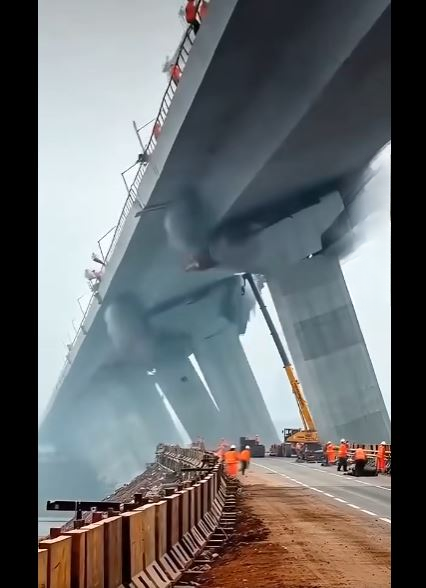Seventeen years ago, the unthinkable happened. During the evening rush hour on August 1, 2007, the bustling eight-lane Interstate 35W bridge in Minneapolis uttered a deep, groaning crack and, in a matter of seconds, collapsed into the Mississippi River. The event was not just a local disaster; it was a national wake-up call that reverberated from Main Street to the halls of Congress, forcing a critical examination of the very backbone of American prosperity: its infrastructure.
This article delves into the tragedy of the I-35W bridge collapse, exploring the causes, the heroic response, the lasting impact on national safety protocols, and the sobering lessons that remain vitally relevant today.
The Day the Sky Fell: A Scene of Chaos and Heroism
The scene was one of pure cinematic horror, yet it was devastatingly real. At 6:05 PM, the 1,900-foot steel truss bridge, one of Minnesota’s busiest, began to shudder and fail. Concrete cracked with thunderous force as entire sections of the elevated roadway tilted, twisted, and broke apart. 111 vehicles and 18 construction workers were sent plunging as much as 115 feet into the river and onto the banks below.
Dust clouds billowed, and twisted steel bent against the force of the collapse. The atmosphere turned to one of panic and sheer urgency. But amidst the chaos, the response was immediate and profound.
First responders scrambled to the scene, performing daring rescues from the precarious wreckage. Among the survivors were the 52 children on a school bus that landed on its wheels on a collapsed section, its driver and passersby helping them to safety through shattered windows. Navy divers spent the following two weeks in the dark, treacherous waters of the Mississippi, recovering the bodies of the 13 victims who lost their lives. 145 people were injured, their lives forever changed.
Unraveling the Mystery: What Caused the Collapse?
In the aftermath, a critical question hung in the air: How could a major interstate bridge simply fall down?
The National Transportation Safety Board (NTSB) launched an intensive investigation. The initial public assumption pointed to a lack of maintenance—the bridge had been rated “structurally deficient” for years. However, the NTSB’s final report pinpointed a more fundamental flaw: a critical design error.
The primary cause was the inadequate thickness of gusset plates, the crucial steel components that connect the bridge’s beams and girders. These plates, designed in the 1960s, were only half as thick as required. This design flaw created a hidden vulnerability for decades.
The trigger for the collapse was the nearly 300 tons of construction materials—sand and gravel—stockpiled on the bridge deck for a resurfacing project. This extra weight, concentrated in one area, pushed the already under-sized gusset plates to their breaking point. The NTSB also cited the bridge’s “fracture critical” design, meaning the failure of a single, vital component could lead to a catastrophic collapse.
The terms “structurally deficient” and “fracture critical” entered the public lexicon, becoming red flags for a nation suddenly aware of its vulnerable infrastructure.
The Ripple Effect: How the Tragedy Transformed American Infrastructure
The I-35W collapse was a catalyst for change. It shattered the complacency surrounding the nation’s roads and bridges and prompted action at both state and federal levels.
1. A State Springs into Action: The Minnesota Model
Minnesota did not wait for a federal mandate. The state accelerated the replacement bridge, opening the new I-35W Saint Anthony Falls Bridge in just over 13 months—a remarkable feat of engineering and efficiency. Furthermore, the state launched a landmark 10-year, $2.5 billion bridge improvement program targeting 172 of its most vulnerable bridges. The program also instituted mandatory independent peer reviews for the design of all major new bridges to catch potential errors before construction begins.
2. National Reckoning and Policy Shifts
Nationwide, the collapse spurred increased scrutiny. According to the American Society of Civil Engineers (ASCE), the number of structurally deficient bridges in the U.S. has declined from 12% in 2007 to about 9% today—a significant improvement, though still representing tens of thousands of bridges.
The disaster highlighted the dangers of “fracture critical” design, leading to new engineering standards that favor redundant structures, where the failure of one element does not lead to total collapse. It also accelerated the adoption of more durable materials and longer design life expectations for new bridges, moving from a 50-year standard to 75-100 years.
The Unfinished Bridge: The Current State of America’s Infrastructure
Despite the progress, the work is far from over. The ASCE’s latest Infrastructure Report Card still gives America’s bridges a “C” grade and estimates a $125 billion backlog of bridge rehabilitation needs.
The debate over federal funding continues. While the 2021 Bipartisan Infrastructure Law represents the largest investment in decades, the long-term challenge of maintaining and modernizing a system built for a previous century remains. The I-35W collapse stands as a permanent reminder of the tangible, human cost of deferred maintenance and underinvestment.
A Solemn Anniversary: Remembering the Lost and Honoring the Heroes
Today, Minneapolis remembers the collapse with quiet dignity. The anniversary is marked by ceremonies for survivors, families of the victims, and the first responders whose bravery shone through the darkness. A permanent memorial, featuring a failed gusset plate, stands near the site, a silent, powerful testament to the 13 lives lost and a permanent call to vigilance.
Conclusion: A Legacy of Vigilance
The I-35W bridge collapse was more than a tragic accident; it was a pivotal lesson in engineering, accountability, and the profound responsibility we bear to maintain the systems that connect our nation. It taught us that “structurally deficient” is not an abstract term, but a warning. It showed that heroes emerge in the darkest moments, and that from profound loss can come a renewed commitment to safety and resilience.
As cars now stream safely across the replacement bridge, the memory of that day in 2007 endures. It is a legacy of grief, but also one of resilience, reform, and a permanent reminder that a nation’s strength is truly built from the ground up.
